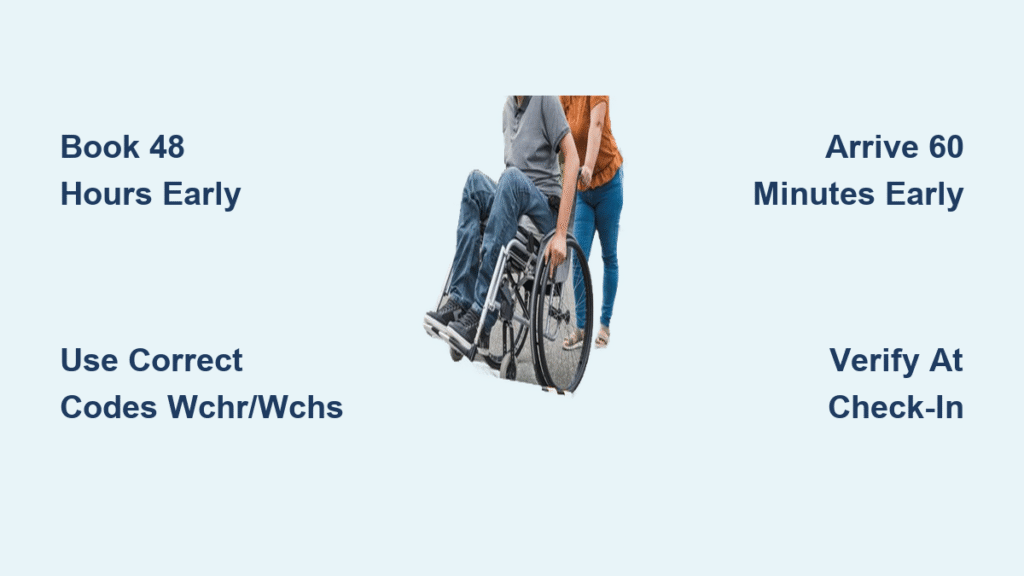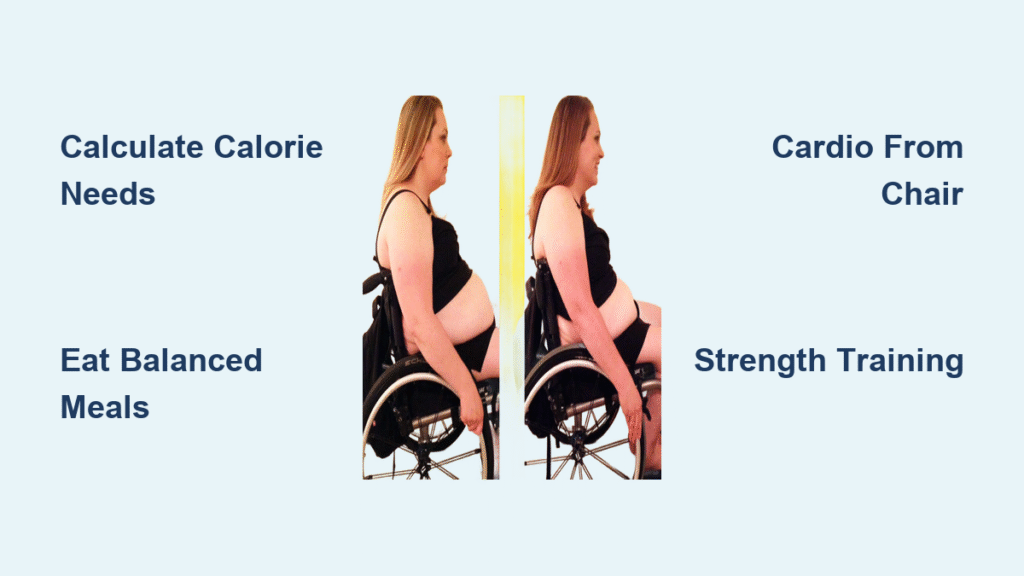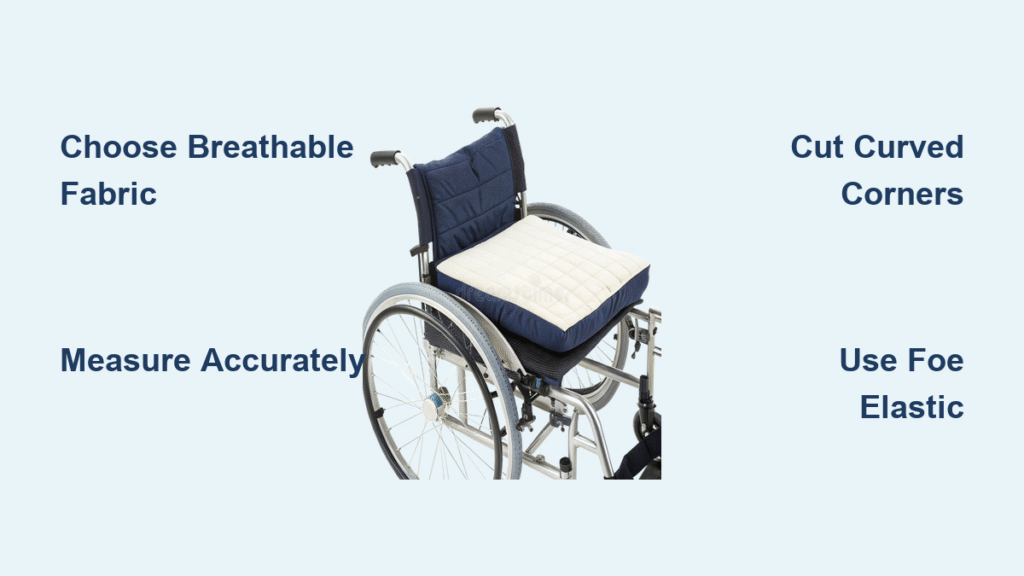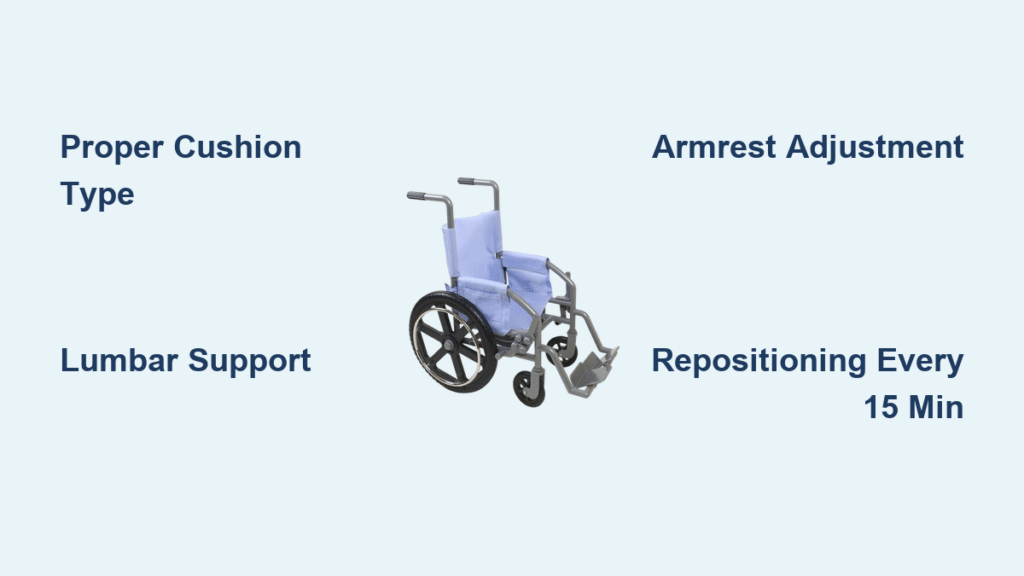Navigating busy airports with mobility challenges shouldn’t feel like an endurance test. Whether you’re recovering from surgery, managing chronic pain, or traveling with an elderly parent, knowing exactly how to set up wheelchair at airport services transforms overwhelming terminals into smooth pathways. Under the Air Carrier Access Act of 1986, airlines must provide this assistance free of charge—no medical documentation required. You simply need to know the right steps at the right time.
This guide cuts through the confusion with actionable steps to secure wheelchair support from curb to gate. You’ll learn precisely when to request help, how to specify your needs to avoid last-minute scrambles, and insider timing strategies that prevent missed connections. Most travelers don’t realize that failing to follow the 48-hour rule or skipping gate arrival protocols are the top reasons assistance falls through. Let’s fix that before your next trip.
Book Wheelchair Assistance Before the 48-Hour Deadline
Why Airlines Require 48 Hours Notice for Guaranteed Service
Airlines mandate 48 hours advance notice to guarantee wheelchair availability because staffing and equipment allocation happen during this window. While some airports accommodate last-minute requests, federal regulations don’t require them to do so. Booking during initial flight purchase—when the wheelchair option appears in checkout—is your safest bet. Without this advance notice, you risk being stranded at check-in with no assistant available.
Adding Wheelchair Service After Booking Your Flight
Missed the booking window? Don’t panic—call the airline’s customer service line immediately. Have your confirmation number ready and state clearly: “I need wheelchair assistance from airport arrival to aircraft boarding, and from aircraft to baggage claim upon landing.” This specific phrasing ensures both departure and arrival airports are notified. The agent will add “WCHR” (wheelchair request) to your passenger record, triggering alerts at every service point.
Same-Day Travel Solutions When Time Is Short
For unplanned trips, arrive 3+ hours early for domestic flights and head straight to the airline’s skycap at the departure curb. Skycaps can immediately deploy wheelchairs and escort you through check-in—bypassing the need for pre-booking. If skycaps aren’t available, tell the first uniformed employee you see: “I need wheelchair assistance for [flight number] right now.” While not guaranteed, most major airlines prioritize these requests when staff are available.
Match Your Assistance Level to Your Mobility Needs
Decoding the Four Wheelchair Service Codes

Airlines use specific codes to tailor assistance to your mobility level—using vague terms like “I need a wheelchair” causes mismatches. Know these designations:
- WCHR (Ambulatory): You walk onto the plane but need terminal transport
- WCHS (Stairs): You board via stairs but can’t navigate terminal stairs
- WCHC (Complete): You require aisle chair for aircraft boarding
- WCHH (Hoist): Needed for passengers unable to transfer independently
How to Communicate Your Needs to Avoid Service Gaps
When booking, replace “I need help” with precise descriptions: “I can walk short distances but need wheelchair transport after security” or “I require an aisle chair to board as I cannot transfer from standard wheelchair.” This specificity ensures you receive the correct equipment—like narrow aisle chairs for aircraft boarding—and prevents assistants from abandoning you at the jet bridge.
Optimize Timing to Prevent Missed Flights

Critical Arrival Windows by Wheelchair Type
Electric wheelchair users must arrive 45 minutes earlier than standard times due to battery inspections and special handling. Manual wheelchair travelers need 30 extra minutes for tagging and storage. For all others, standard 2-hour domestic/3-hour international arrival applies—but gate arrival requires extra buffer. Showing up late is the #1 reason for missed connections, as assistants manage multiple passengers on tight schedules.
Why Gate Arrival 60 Minutes Early Is Non-Negotiable
Be at your departure gate 60 minutes before boarding starts, not just 30. Wheelchair assistants often service 3-4 passengers per trip and operate on timed routes. Arriving late means waiting for the next shuttle—which could miss your flight. Gate agents won’t hold planes for late-arriving wheelchair passengers, so build in this buffer even if your flight is on time.
Master Airport Arrival with Pro Tactics
Where to Trigger Assistance Immediately Upon Entry
The moment you enter the terminal, tell any uniformed employee (not just airline staff): “I have wheelchair assistance booked for [flight number].” This activates the system faster than waiting for check-in. Skycaps at departure curbs are your secret weapon—they provide instant wheelchairs and skip security lines, cutting 20+ minutes off your process.
Check-In Verification That Prevents Gate Surprises
At the counter, don’t just ask “Is my wheelchair request set up?” Demand verification: “Confirm wheelchair service is coded for both departure and arrival airports.” Insist on seeing the “WCHR” notation on your boarding pass. If missing, refuse to leave until resolved—fixing this at check-in avoids chaos at your destination gate.
Streamline Security with Wheelchair Support
What Your Assistant Handles During Screening
Your designated helper manages the entire security process:
– Guides you to the shortest accessible TSA lane
– Helps remove shoes/belts while keeping you seated
– Transports your carry-ons through scanners
– Retrieves belongings post-screening
– Escorts you directly to your gate
Keep medications in a separate clear bag—they’ll hand it to you during screening since assistants can’t pack/unpack for you.
Handle Connections Without Panic
Why Connecting Flights Automatically Continue Assistance
Wheelchair service continues seamlessly for connections on the same reservation. Gate agents receive alerts about arriving wheelchair passengers, so you won’t need to rebook. For international flights, assistants stay with you through customs, immigration, and baggage recheck—no need to request new help.
How to Beat Tight Connections Under 90 Minutes
Tell your wheelchair assistant immediately: “I have a [X]-minute connection to [flight number]—can you radio ahead?” They’ll coordinate with gate agents to either expedite your transport or request a brief hold on your connecting flight. Never assume they know your connection time—always state it explicitly.
Manage Your Personal Wheelchair Like a Pro
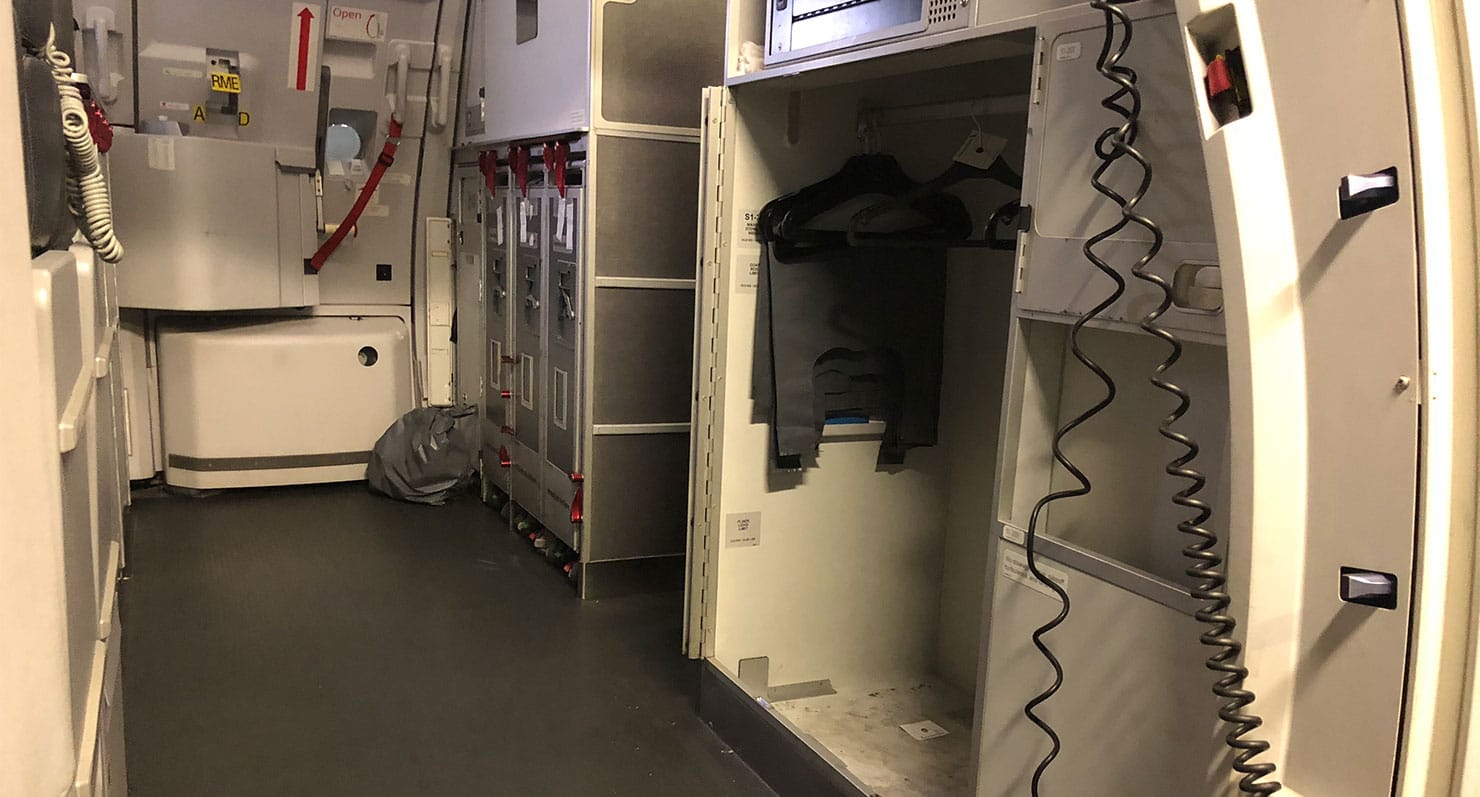
Electric Wheelchair Check-In: Avoid Battery Delays
Arrive 45 minutes early specifically for electric chair processing. Airlines will:
– Inspect if you have dry cell (safe to stay installed) or wet cell batteries (may require removal)
– Tag equipment for gate delivery at destination
– Provide two claim tickets—keep one, give one to gate agent
Never check an electric wheelchair without verifying battery protocols first.
Manual Wheelchair Storage: Prevent Lost Parts
Detach footrests, seat cushions, or oxygen tanks and carry them onboard as personal items. Gate agents will tag your frame for “gate check,” but detachable parts often get misplaced if left attached. Hand these items directly to flight attendants upon boarding.
Troubleshoot Common Wheelchair Assistance Failures
No Wheelchair Available? Demand Immediate Help
If no assistant appears within 15 minutes of arrival, approach any airline employee and state firmly: “I have a wheelchair request for [flight number]—where is my assistance?” If unresolved, ask for a supervisor—federal law requires accommodation. Document refusal attempts; airlines face fines for violations.
Recover From Equipment Damage in 3 Critical Steps
If your personal wheelchair is damaged:
1. Take photos immediately of all damage before leaving aircraft
2. Report to gate agent before exiting secure area—get written report
3. Request repair authorization before accepting replacement
Airlines must cover repairs or provide comparable replacements within 24 hours.
Setting up wheelchair assistance takes minutes but prevents hours of airport stress. Book during initial flight purchase using the precise codes (WCHR/WCHS), arrive with the required extra time, and always confirm service at every touchpoint. Remember: airlines must provide this federally mandated service without question—so advocate clearly for your needs. Your smooth journey starts the moment you step into the terminal. Safe travels begin with preparation.

